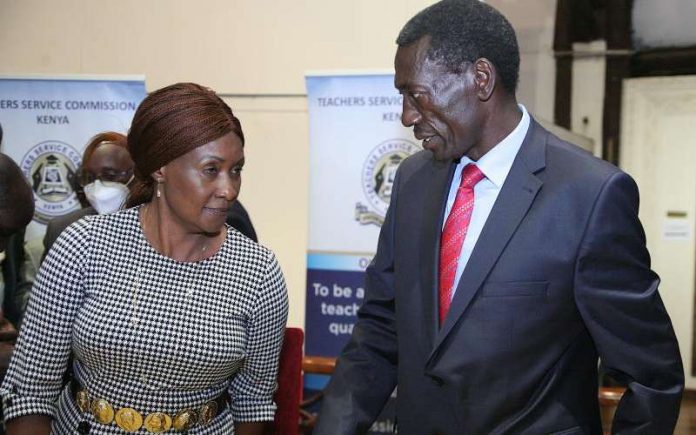The Teachers Service Commission is seeking to employ 14,460 teachers in a bid to plug acute shortage that has crippled learning in public primary and secondary schools. owing to 100 percent transition. This is the highest number in recent times.
According to the advert seen by this author, the commission has declared 5,000 new vacancies that it intends to fill next month and 8,230 others to replace teachers who have exited service through natural attrition.
Of the new vacancies, 3,972 will go to secondary schools to help cope with the shortage created by 100 per cent transition policy, 1,000 to primary institutions while teacher training colleges will get 28 tutors.
Prospective employees will work under permanent and pensionable terms of service.
To fill vacancies that have been left vacant by exits, the commission will recruit 6,539 teachers for primary and 1,691 others for secondary schools. These too will be on permanent and pensionable terms.
TSC has lined up 844 permanent positions for schools in the north. Through affirmative action, only teachers who hail from the region will be considered for employment. This is a re-advertisement after the commission failed to get enough teachers in a previous recruitment drive. Primary schools will get 764 teachers while 80 will be posted to secondary institutions.
“To qualify for recruitment, a candidate should be a Kenyan citizen, be hailing from Garissa, Mandera or Wajir Counties, be teaching under Board of Management in Garissa, Mandera or Wajir Counties,” read part of the notice.
Candidates have until July 7 to apply online through the TSC website www.tsc.go.ke under ‘Careers’ or teachersonline.tsc.go.ke. There will be no manual applications. Dr Macharia said the shortlisted candidates, interview dates and venues will be published on the TSC website by July 15. They will then be expected to present original academic and professional certificates during the interview.
TSC boss added that the merit lists that will be generated during the recruitment exercise will be used in subsequent recruitment processes within the financial year.


